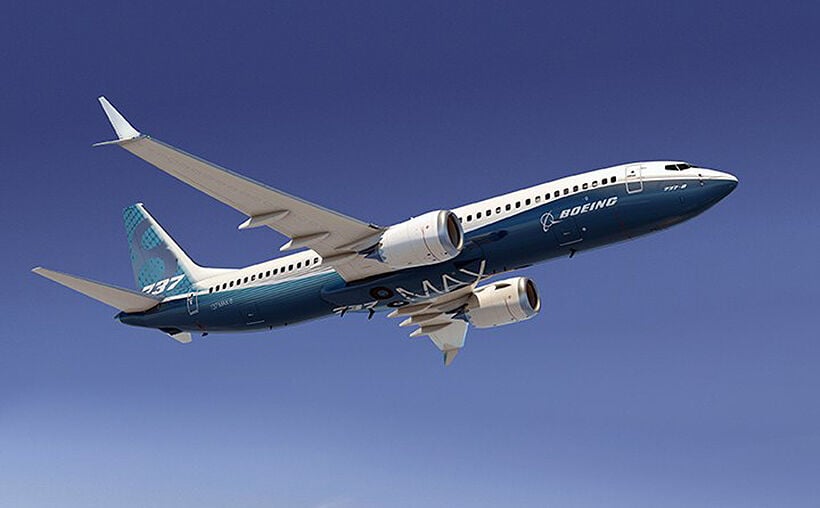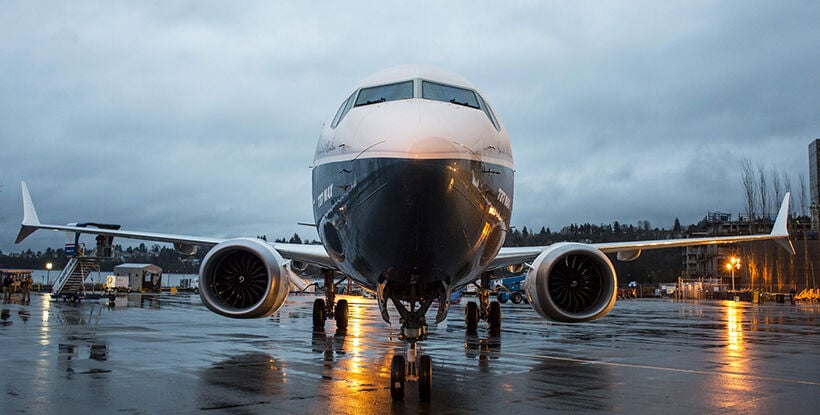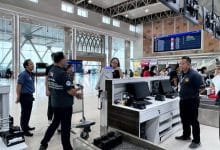Is the new Boeing 737 Max safe to fly? New Netflix documentary argues the case against Boeing

A new Netflix documentary, directed by Rory Kennedy, is a withering and forensic critique of the Boeing company and their complicit cover up of problems with their new Boeing 737 Max aircraft.
“Downfall: The Case Against Boeing” lacks overt drama or re-enactments of screaming passengers, but it catalogues a two decade-long decent from a company paranoid about safety to a company paranoid about its stock price.
That Boeing, a proud US aviation technology manufacturer, ended up in its current predicament, is the subject of this Netflix documentary.
“The safety culture at Boeing fell apart. It was corrupted, from the top, down, from pressures from Wall Street, plain and simple.”
Chair of the Committee on Transportation and Infrastructure – Peter A. Defazio
Before the fatal crashes of two shiny new Boeing 737 Max jets, within 5 months in October 2018 and March 2019, almost no one outside the airline industry, even 737 pilots, had ever heard of MCAS, the Maneuvering Characteristics Augmentation System.
The software, originally developed to counteract unusual flying characteristics of the re-deigned 737 aircraft, turned out to be the disruptive, catastrophic trigger that led to the crashes of Lion Air Flight 610 and Ethiopian Airlines Flight 302.
Rory Kennedy presents a straightforward and sobering documentary “Downfall: The Case Against Boeing”, and nails the responsibility of the deaths of the 346 terrified passengers and crews, solely at the feet of a greedy and corporately flawed manufacturer.
Boeing’s conduct, to regulators, to the families of the deceased passengers, to the stockholders, has been reprehensible throughout, and the documentary paints a vivid portrayal of a US manufacturer that still believes its own hubris and never taken responsibility for the deaths of the people who innocently bought tickets to sit in two, almost brand new, Boeing planes.
Let’s back-track 2 decades…
Boeing originally launched the 737 back in 1967 and had twice rolled out updates for the platform. They were updates that wouldn’t require retraining for the pilots – a key cost for airlines introducing new model aircraft.
To squeeze just one more model out of the old 737 design, without developing a new clean-sheet single-aisle jet, Boeing rushed into a series of mis-steps which eventually led to the deaths of 346 people.
The newer, larger, turbo fan jet technology would offer a 10-15% reduction in fuel burn… that was very attractive to new customers after Airbus had offered a similar upgrade of the newer generation jet engines on their A320 platform… that aircraft would be called the A320 NEO (new engine options) and forced Boeing’s hand to come up with a competitive solution, quickly.
The main difference was the original Airbus A320 design had a lot more ground clearance, allowing a larger engine to fit under the wing without changing the centre of gravity or centre of thrust. For the ageing Boeing 737, closer to the ground, the larger engines were simply unable to fit under the wing so needed to be located both further forward, and mounted higher up on the wing. Looking from the front of the plane it is clear that the top of the engine cowling is now above the wing, before it was below.

This new engine would alter the critical flight balance of the plane. No problem… come up with a software solution to re-trim the plane’s balance whilst it was flying. That software would be called MCAS, the Maneuvering Characteristics Augmentation System.
The Boeing software engineers knew about it, but the pilots of the new 737 MAX didn’t. And when the system went rogue, the pilots were unaware of how to disable the system that pushed the nose of the plane down when fed faulty information from the Angle of Attack sensor.
In both crash cases, the flight crews battled for a number of minutes with the rogue software, unable to counteract the terrifying pitching of the nose downward.
On October 29, 2018 a Lion Air Boeing 737-MAX 8 series plunged into the sea just off the Jakarta coast at over 800 kilometres an hour, killing all 189 people on board.
But even after the first crash, the aircraft manufacturers’ management would try and push the blame onto the dead pilots and the airline, Lion Air.
Then on March 10, 2019, another new 737-MAX 8 crashed just after take-off from Addis Ababa in Ethiopia. 157 passengers and crew died in that incident.
Both aircraft were almost new.
And in both cases it was found that the wayward MCAS software was triggered on the planes by a faulty angle of attack sensor, sending inaccurate information about the nose-up attitude of the planes. There was no redundancy in the AoA sensor either. The pilots were unable to override MCAS… they didn’t even know about it.
The two 737 MAX 8 crashes would bring Boeing to its knees, exposing a decades-long toxic culture of cost-cutting and compromises that led the death of 346 people.
To add salt to the wound, buyers of the fatally-flawed aircraft would even be expected to add an Angle of Attack gauge to the 737 Max as an optional extra, with a list price of US$80,000. Neither of the two crashed aircraft had these vital gauges on their planes.
Even worse, Boeing refused to make any changes to the 737 MAX that required existing pilots to retrain in expensive simulators.

“Downfall” is a scathing indictment of how the Boeing company allegedly eschewed safety and transparency in favour of maximum profits for shareholders. “Downfall” is meticulously researched, undramatic, hour and a half that looks more like an extended 60 minutes report than a feature documentary . The interviews of the passengers families, Boeing engineers, former Boeing staff and some of the investigators are chilling.
It also catalogues the hey days at Boeing when it launched the groundbreaking 707, 727 and 747 jets that transformed the airline industry.
“If it’s not Boeing, I’m not going!” became the catchphrase for a generation, reacting to Boeing’s remarkable safety record that it eared through the decades from the 60s – 2000s.
When the first 737-MAX crashed in Jakarta, appearing on Fox Business, Boeing’s CEO Muilenburg all but blamed Lion Air and the pilots for the tragedy. He kept re-iterating that safety was a core value for Boeing. But Robinson’s book clearly indicates that Muilenburg’s words did not stack up with the evidence presented.
Then the FAA’s Aircraft Certification Service calculated that there might be as many as 15 more 737 MAX crashes unless MCAS was fixed…. based on the potential size of the MAX fleet, the hours in the air and the possibility of pilots not being able to cope in the event of an Angle of Attack sensor failure.
But Boeing and the FAA appeared “OK” with those odds and the MAX kept flying. After all, no Americans had died so far.
Then an Ethiopian Airlines 737 MAX crashed, killing everyone on board. This, after 25 of the Max model planes had experienced “some sort of safety issue” in the months after they had been delivered to their airlines, according to Robinson’s book.
In 2018, there was one fatal crash in every 3 million flights. The Boeing MAX had a fatal accident rate of one in every 200,000 flights, taking flying safety rates back nearly 70 years
Boeing, with the support of the US flying authorities, wanted to keep the new model 737 flying, but the rest of the world could see there was a problem. China was first to ground the MAX in March 2018, just days after the crash of the Ethiopian Airlines 737 Max 8. Eventually the entire 737 MAX series was grounded worldwide on March 13, 2018.
It would take another 2 years for Boeing to convince the US FAA that the problems had been fixed and get clearance to allow the MAX to fly again. Software upgrades, wiring and pilot training all had to be completed… in all it ended up costing Boeing some 20 billion dollars.
Now the MAX model are flying around the world again, with some of the airlines marketing the planes without the ‘MAX’ monicker. And Boeing have returned to full production of the Boeing Max, still relying on the MCAS software to counteract inherent balance problems, although Boeing now say, they believe, “it’s the safest plane in the sky”.
So is the Boeing MAX model safe to fly? According to world aviation authorities… yes. But, the critical aircraft balance issue has never been resolved. The new, larger, heavier engines are still hanging further forward, with the trust line higher up, on the wing. But, for all intents and purposes, the upgraded software, along with proper pilot training, has won the day with worldwide aviation authorities believing that the software will be a sufficient safety barrier against any future mishaps.
We should also add that the problems mentioned in this article are specific only to the Boeing 737 MAX and that similar issues have not affected Boeing’s other aircraft. Having said that, however, Boeing are now buried under years of delays and quality problems for two of their other aircraft, the 787 ‘Dreamliner’ and the new 777x.
In Thailand, only Thai Lion Air took delivery of three 737 MAX Aircraft for its fleet but it cancelled its order for nearly 100 more and have since ordered new Airbus 320 Neo aircraft instead.
Flying in planes, in the third decade of the 21st century, is remarkably safe. And there’s no doubt that this particular model has had a major microscopic look into all facets of the plane’s safety. But there will be segments of the flying public that remain just a little suspicious of how the model came to be, the inherent design flaws that still exist, the callous response from Boeing, and the memory of those 2, horrific, but preventable crashes, and the lives of the 346 people that perished.
For all its clinical precision, “Downfall: The Case Against Boeing” is most effective during interviews with the parents, the widows, and family members who had to receive those chilling phone calls after the planes, with their loved-ones, hurtled into the sea and into the ground.
The documentary is testimony to the greed and avaricious nature of a once respected and loved US manufacturer.
Would you fly in a Boeing 737 MAX? Tell us tour thoughts in our Thaiger Talk forum. Click the link below…
Latest Thailand News
Follow The Thaiger on Google News:


























